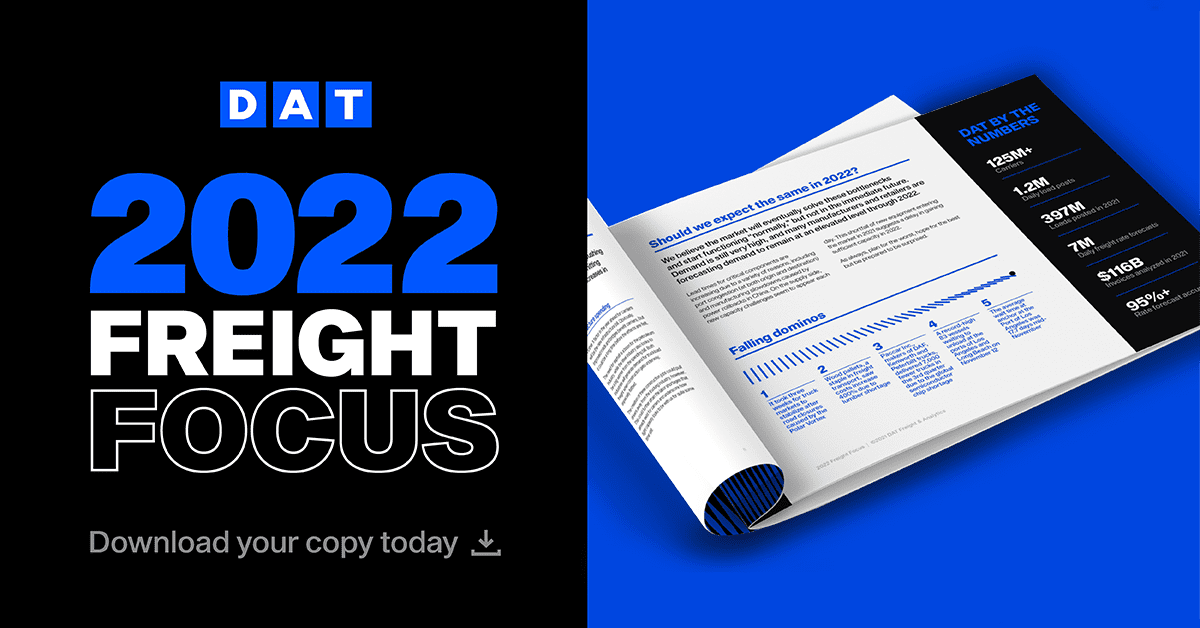As the capacity crunch continues to stress truckload markets, freight brokers are tasked with more and more difficult problems to solve for their shipper customers. We don’t anticipate truckload capacity loosening significantly at any point in the near term, which will continue to squeeze markets for brokers.
Get your copy of 2022 Freight Focus: The Transportation Logistics Outlook to get the full report on how to navigate these volatile times.

Get on the routing guide
While margins have shrunk, volumes have risen for brokers. During certain points of the past year, as much as 25% of total truckload freight moved on the spot market. Before the pandemic, 13% of shipments were spot moves.
As shippers diversify their transportation portfolios in order to avoid paying spot premiums, brokers can seize the opportunity to bid on more contract business. With access to a wide array of small carriers, brokers can add much needed flexibility on a shipper’s most problematic lanes.
Brokers can also leverage accurate forecasting tools to better position themselves to place bids that are both attractive and profitable.
Reward relationships
Along with the ongoing backlogs at the ports and railroads, there are still numerous obstacles for new truckload capacity entering the marketplace:
- Jobs returning to other sectors, pulling drivers out of the industry
- Truck prices hinder carriers’ abilities to meet demand
- New carriers exiting due to increased costs
The current market underscores the importance of carrier relationships. Brokers can become preferred partners to their core group of carriers by offering automated booking and quick pay options, allowing them to tender freight without ever having to post it to a load board.
This investment in new technology frees brokerages up to focus on their customers’ more difficult shipments and allows businesses to move more freight with fewer resources.

